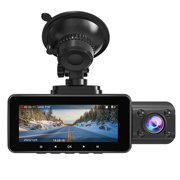Rain is good for watering plants and clearing the dry spell. However, the rain has its negative effects aside from flooding. When it rains, driving can be quite challenging and dangerous. When it rains unexpectedly, you need to observe safety tips to drive better on the wet road. Read through the entire article to find out the problems experienced when it rains and how to overcome them.

Vision problems
The first rainy day driving problem you experience is impaired visibility on the road. When it starts pouring, seeing ahead while driving becomes almost impossible even with headlights on. Ensure that you have windshield wipers in great working conditions to wipe away the raindrops as they land. If not, the drops will accumulate on the windshield and reflect light. This will interfere with how you see the road and make it difficult for you to navigate through it. If this happens, the first thing you need is to reduce your driving speed to ensure you are driving within the distance you can see.
Getting a vision system for your car is by far the best solution to your vision problems on the road when it rains. There are plenty of vision systems on the market promising good performance. However, Lanmodo Vast Pro safe driving assistant is the best-selling system on the market right now. This driving assistant can spot objects on the road as well as animals and pedestrians who are a few meters ahead. Even when it is raining heavily, the system can display the road situation for you to take the right driving action to avoid a collision. The installation of this device is extremely easy and the rain will not affect how it functions. With this system in your car, driving in the dark or rainy conditions becomes easy.

The use of lights
When it suddenly starts to rain, the clouds become dark and it becomes quite difficult to see ahead. If the road is well-lit, the light can bounce back on the raindrops and end up causing a glare on the eyes of the driver. This can lead to collisions and accidents. To avoid this, it is best to use the headlights correctly. In this situation, passing lamps or even fog lights can be used to enable you to see the road. This also lets other road users see you as well to prevent accidents.
Puddles and accumulated water
Puddles form on the road especially when it rains. Driving through the puddles and accumulated water becomes almost inevitable. However, this can pose a threat to the car's engine. There are air intakes in most modern cars that suck up water into the engine which may cause it to have a hydrostatic lock. This damages how the engine functions and even the engine altogether. To prevent this, ensure you drive through puddles that are a few inches deep.
Avoiding the puddles altogether is the best safety tip to consider just to prevent potential engine damage. Flooded roads are very dangerous and it is best to avoid them. The accumulated water can be strong enough to carry the vehicle away and into rivers or dams. If the road is flooded, avoid driving on it completely.

Blurred rearview side mirror
As mentioned earlier, driving through the rain can be dangerous especially because of the inadequate visibility. You need to see the road in all directions. The rear mirror helps you see the cars approaching your vehicle. However, when it rains, water drops may accumulate in the mirror thus making it difficult to see what is happening behind you while driving. To prevent this, make sure you get a high-quality rear mirror that doesn't blur no matter the condition. Also, you can use a soft cloth to keep wiping the mirror for you to view the road better when it rains.
Turning and speeding
The road becomes slippery when it rains. This causes the tires of the vehicle to lose traction. Turning the car can become a problem. Over speeding on a slippery road will make it hard for the grooves in the tires to channel water out hence causing hydroplaning. Make sure you drive at lower speeds of less than 35 mph. This will guarantee your safety while you drive through the rainy conditions.



